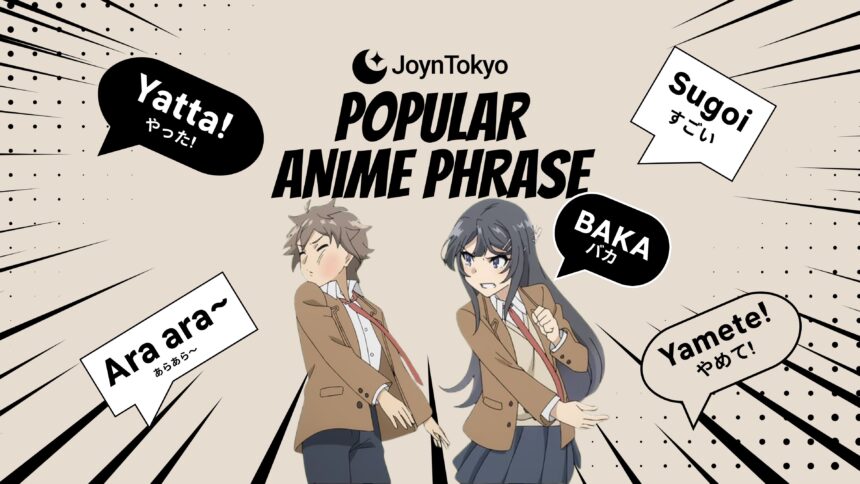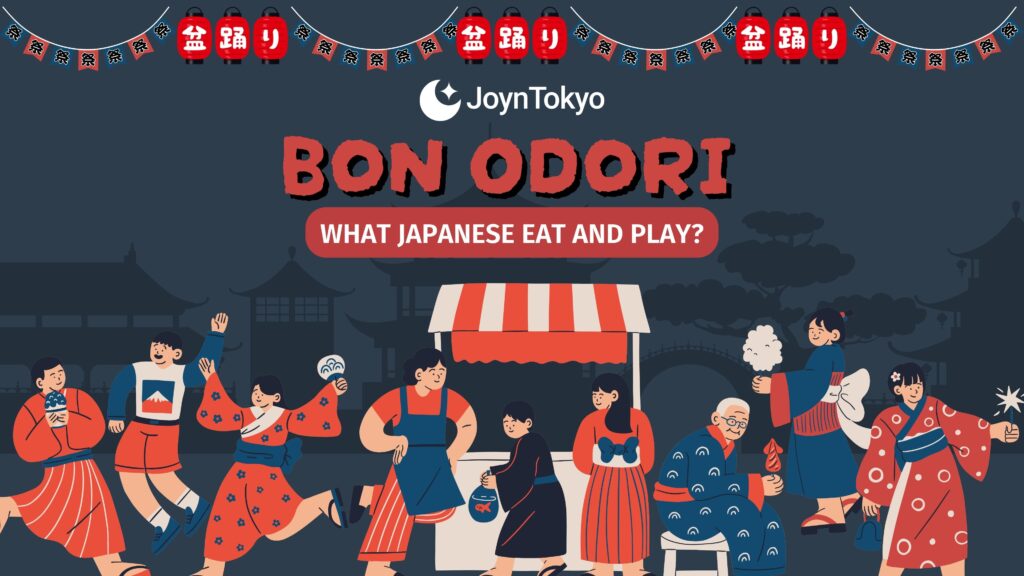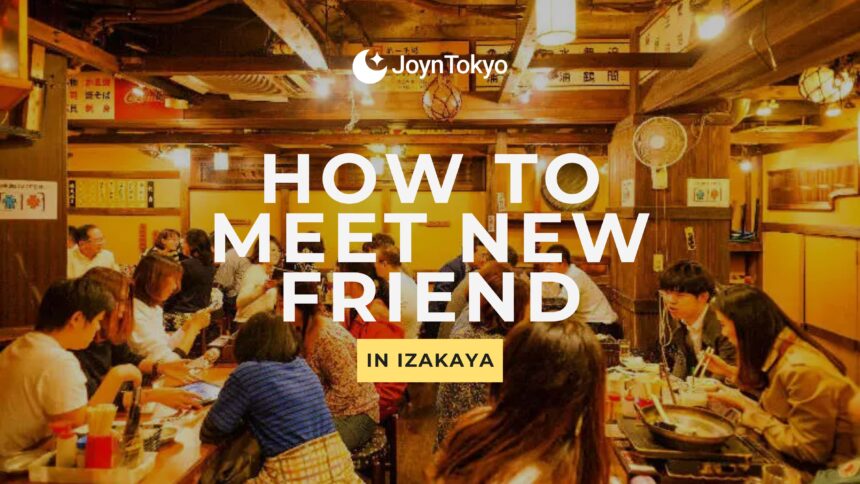Textbooks may teach structure, while anime can breathe soul into the language, and slang is the rhythm that makes dialogue feel alive. Learning phrases common in anime lets you follow fast plot twists without hitting pause for the subtitles, and it gives you a shared shorthand that helps you connect instantly with other fans.
Essential Anime Phrases You Hear in Every Series

Anime is filled with recurring phrases that fans quickly come to recognize and love. These expressions often capture intense emotions, dramatic moments, or quirky humor. Learning these phrases not only deepens your appreciation for anime but also helps you pick up basic Japanese naturally. From “Nani?!” to “Yamete kudasai,” these essential sayings are part of what makes anime so memorable.
“Nani?” (何?) – What!?

- Usage Tip: Stretch the first syllable for dramatic effect
When a character gasps in disbelief this versatile word explodes from their lungs. It works for last‑second plot twists, slap‑stick accidents, and surprising love confessions. The meme culture around it is so strong that even non‑fans recognise the dramatic echo of “Nani?!”
“Yatta!” (やった!) – I did it!

Usage Tip: Throw in a fist pump for full anime energy
This exclamation carries pure victorious spirit that spreads to anyone within earshot. It punctuates everything from winning a boss battle to finishing a difficult homework assignment. Because the phrase radiates positivity, it often sparks group cheers or spontaneous dances.
“Yamete!” (やめて!) – Stop!

Usage Tip: Use sparingly unless you really need something to end
The plea “yamete” has a sharp urgency that cuts through chaos. Characters shout it in peril, embarrassment, or righteous anger when polite requests no longer work. In daily conversation a quieter “yamete kudasai” can halt spoilers or unwanted teasing without drama.
“Sugoi!” (すごい!) – Amazing!

Usage Tip: Works for plot twists and tasty food alike
“Sugoi” transforms ordinary moments into exciting ones in a single breath. Its tone ranges from genuine awe at a stunning view to playful exaggeration over a cute pastry. Because it is so flexible, you will hear it across every genre and social setting.
“Kakko ii!” (カッコいい!) – Cool!

Usage Tip: Perfect compliment for a new cosplay
“Kakko ii” praises style, confidence, and flair all at once. Saying it about a hero’s entrance applauds both their courage and their outfit. In real life it flatters musicians, athletes, or anyone who owns the moment with panache.
“Ara ara~” (あらあら〜) – Oh my!

Usage Tip: Channel older sister vibes with a knowing smile
“Ara ara” carries a teasing warmth that hints at both maturity and amusement. It softens scolding into flirtation, which is why elegant characters favor it. Online, the phrase has become a playful audio cue that signals cheeky approval.
“Itadakimasu” (いただきます) – Let’s eat!

Usage Tip: Always say it before meals, even instant ramen
More than table manners, “itadakimasu” is a cultural bow to everyone involved in creating the meal. The phrase reminds diners to appreciate farmers, cooks, and nature itself. Saying it in a group sets a shared rhythm that turns any snack into a small celebration.
“Baka!” (バカ) – Idiot!

Usage Tip: Friendly banter if said playfully, harsh if you shout
Baka can sting or amuse depending entirely on delivery. A tsundere character spits it out to hide affection, while close friends use it as light‑hearted ribbing. Learners should practice tone carefully, because context dictates whether it lands as humor or insult.
“Ganbatte!” (頑張って!) – Do your best!

Usage Tip: Universal encouragement from exams to boss fights
“Ganbatte” packs hope, belief, and motivation into one word. It is shouted across stadiums, whispered before interviews, and typed in chat during esports finals. Responding with a confident hai rallies both speaker and listener to push forward together.
“Daijoubu?” (大丈夫?) – You okay?

Usage Tip: Quick welfare check when someone looks shaken
“Daijoubu” is a gentle safety net that invites honesty. It can mean “Are you hurt?”; “Are you worried?”: or simply “Are you still with me?” The rising tone at the end offers help without forcing it, making the phrase comfortingly versatile.

Pro Tip Pair Sugoi with Kakko ii for the ultimate hype combo, “Sugoi, kakko ii!”
Community Anime Phrases, Born on the Internet

Online fandoms invent new vocabulary at lightning speed, and anime culture is no exception. These words spring from message boards, meme threads, and livestream chats, then spread worldwide in a matter of hours. Community slang captures in‑jokes, shared frustrations, and collective hype that official dictionaries rarely record. Mastering these terms lets you navigate comment sections smoothly and signals that you are an insider, not just a casual viewer.
“Waifu/Husbando” (ワイフ/ハズバンド) – Fictional spouse
Usage Tip: Declare allegiance to your favourite character with playful devotion
Calling someone a “waifu” or “husbando” elevates admiration into light‑hearted devotion. Fans plaster these favorites on desk mats, phone wallpapers, and figure shelves. The terms also spark lively debates about which character truly deserves lifelong loyalty.
“Filler” (フィラー) – Non canon episode
Usage Tip: Skip or binge depending on your patience with side quests
Filler keeps weekly broadcasts alive when the anime is waiting for new chapters from the manga to continue the story. Creative teams sometimes use the break to explore side characters or experiment with comedy. Other times it earns infamy and is skipped entirely in streaming guides.
“Fanservice” (ファンサービス) – Visual fan appeal
Usage Tip: Expect dramatic slow motion or strategic sparkle effects
Fanservice targets specific cravings, whether detailed mecha shots or beach episode humor. It often pauses the main plot, yet when handled well it deepens audience affection for the cast. The concept has spread beyond anime into games, comics, and even film franchises.
“Fansub” (ファンサブ) – Fan subtitle
Usage Tip: Perfect for niche shows lacking official translations
Fansubs began as passionate projects shared on VHS long before streaming existed. Translator notes teach cultural jokes, food puns, and honorific nuance that official subs sometimes skip. Many professionals in today’s industry honed their craft on these volunteer teams.
Niche Otaku Anime Phrases

Beyond mainstream catchphrases lies a treasure trove of niche vocabulary known mostly to long‑time viewers. These expressions reference production quirks, subgenre tropes, and even industry folklore that casual audiences might miss. Dropping a deep‑cut term in conversation is like a secret handshake that proves your veteran status. Explore them to appreciate how layered and self‑referential anime culture can be.
“Chuunibyou” (中二病) – Eighth‑grade syndrome
Usage Tip: Tease friends acting like secret agents of destiny
“Chuunibyou” captures the awkward magic of early teens when imagination outruns reality. The syndrome fuels grand speeches about secret powers and ancient destinies. Looking back, many adults find their own cringe phase endearing rather than embarrassing.
“Henshin” (変身) – Transformation
Usage Tip: Shout it before striking your cosplay pose
“Henshin” is more than a word, it is an audible trigger for spectacle. Audiences cheer because a glittering costume change or mechanical reconfiguration is moments away. Saying it at conventions gathers photographers in seconds for dramatic photos.
“Uguu~” (うぐぅ〜) – Cute whine
Usage Tip: Pull it out when puppy eyes alone will not sway your friends
Uguu distils pure moe into one soft sigh. It signals gentle dismay that seeks comfort rather than rescue. Listeners often respond with plush toys, snacks, or reassuring pats.
“Sakuga houkai” (作画崩壊) – Animation breakdown
Usage Tip: Point it out when there is a noticeable decline in animation quality
“Sakuga houkai” highlights the fragile balance between ambition and deadline in animation. Fans track these production glitches because they reveal the human side of the craft. Some breakdown frames even gain cult status for their unintended comedy.
“Imouto moe” (妹萌え) – Little sister trope
Usage Tip: Reference when the younger sibling steals the spotlight
“Imouto moe” celebrates the idealized younger sister who is equal parts adorable and supportive. Storylines often revolve around protecting her innocence or cheering on her dreams. The trope taps into universal feelings of family care and nostalgia.
“Toutoi” (尊い) – Too precious
Usage Tip: Whisper it while clutching your heart during wholesome scenes
“Toutoi” is a hushed blessing reserved for moments of overwhelming purity. Viewers exhale the word when characters share gentle smiles or reach emotional breakthroughs. Saying it feels like wrapping the scene in a warm blanket of comfort.
Anime Phrases You Can Use in Daily Life

Some anime words blend so well with everyday speech that you can use them outside watch parties without raising eyebrows. They are short, friendly, and instantly convey warmth or gratitude in casual settings. Incorporating these phrases adds a playful dash of Japanese culture to your routine and helps reinforce good manners at the same time. Try them with friends or coworkers to see how quickly they brighten mundane exchanges.
“Otsukare” (お疲れ) – Good job

Usage Tip: Casual sign off after work or study sessions
“Otsukare” conveys empathy as much as praise by acknowledging effort and fatigue. The word fosters camaraderie among classmates or coworkers at the end of a task. It can also serve as a friendly goodbye for the evening.
“Ittekimasu” (行ってきます) – I’m off, see you

Usage Tip: Announce departure from home or office
This phrase creates a ritual boundary between inside and outside. Saying it triggers caring responses that reinforce belonging. Even people who live alone sometimes say it for psychological comfort before stepping out.
“Tadaima” (ただいま) – I’m home

Usage Tip: Shout it upon return to hear the welcoming “Okaeri” reply
“Tadaima” completes the round trip narrative started by ittekimasu. Hearing okaeri in response releases tension gathered from the outside world. The exchange turns an ordinary doorway into a shared moment of relief and connection.

If you can picture a school anime using the phrase in a classroom scene, it is usually safe for real life.
Anime Phrases versus Real Life Japanese
While anime dialogue is exciting and expressive, it does not always mirror everyday conversation in Japan. Real‑world speech demands different levels of politeness, nuanced honorifics, and quieter volume than you hear on screen. Recognising the gap keeps you from sounding rude or overly dramatic when you visit Japan or speak with native speakers. This section breaks down the biggest differences so you can code‑switch with confidence.
Formality: Anime Leans Casual, Real Life Demands Politeness
Anime characters often speak in casual or even rough tones, especially when they’re young, rebellious, or comedic. You’ll hear lots of dropped particles, blunt statements, and slangy phrasing, but that doesn’t fly in most real-world situations.
In everyday Japanese, especially when speaking to strangers, teachers, or coworkers, you should stick with polite forms like “desu” and “-masu” endings.
For example
- Anime: Doko iku no? (“Where ya going?”)
- Real life: Doko ni ikimasu ka? (“Where are you going?” – polite)
When in doubt, start formal. You can always switch to casual once the relationship or setting allows it.
Honorifics: Always Safer to Use “-san”
Anime often features close friends or rivals who drop honorifics entirely or call each other by nicknames. While this is common in fiction to build intimacy or tension quickly, real-world Japanese still relies heavily on honorifics to signal respect and social distance.
In professional or unfamiliar settings, “-san” is your safest bet, it’s respectful and gender-neutral. Dropping it too soon can feel abrupt or presumptuous, especially in workplaces or formal introductions.
For example
- Anime: Sasuke! (no honorific, implies closeness or drama)
- Real life: Sasuke-san (respectful and appropriate unless you’re close friends)
Honorifics like “-sama,” “-kun,” or “-chan” should only be used when the context clearly calls for them.
Emotional Volume: Keep It Cool Outside the Screen
In anime, characters yell, gasp, and explode with emotion. It’s part of the charm. But in reality, public emotional restraint is a key part of social harmony in Japan.
For instance, screaming “NANI?!” (What?!) at full volume may get laughs at an anime convention, but in a quiet café or train station, it will absolutely turn heads — and not in a good way. Japanese culture values calm, quiet exchanges, especially in public.
If you’re confused or surprised in conversation, opt for a measured response like:
- Eeh, hontou desu ka? (Really?)
- Sou nan desu ne (Oh, I see)
Tone down the theatrics unless you’re among friends who get the joke — or you’re on stage.
Gendered Language: Context Matters More Than Copying
Anime characters often use highly gendered speech to express personality. Tough guys say “ore” (I), and soft-spoken girls might say “atashi” or “watakushi.” But real people choose pronouns and phrasing based on both gender identity and social context.
For example
- “Ore” is masculine and casual which is fine for young men in casual settings but rude in a job interview.
- “Watashi” is neutral and polite, suitable for both men and women in most situations.
- “Boku” is soft-masculine, used by younger men or boys, but also professional and modest.
The same applies to sentence endings like:
- dayo (casual, often masculine)
- wa (feminine, softer tone)
- ze (rough and assertive)
Before mirroring anime phrasing, ask yourself if the tone matches your identity and the formality of the situation.
Anime slang is your gateway from passive watching to active participation in fandom. Master these phrases, sprinkle them wisely, and you will be shouting “yatta” when senpai finally notices your refined otaku vocabulary.







